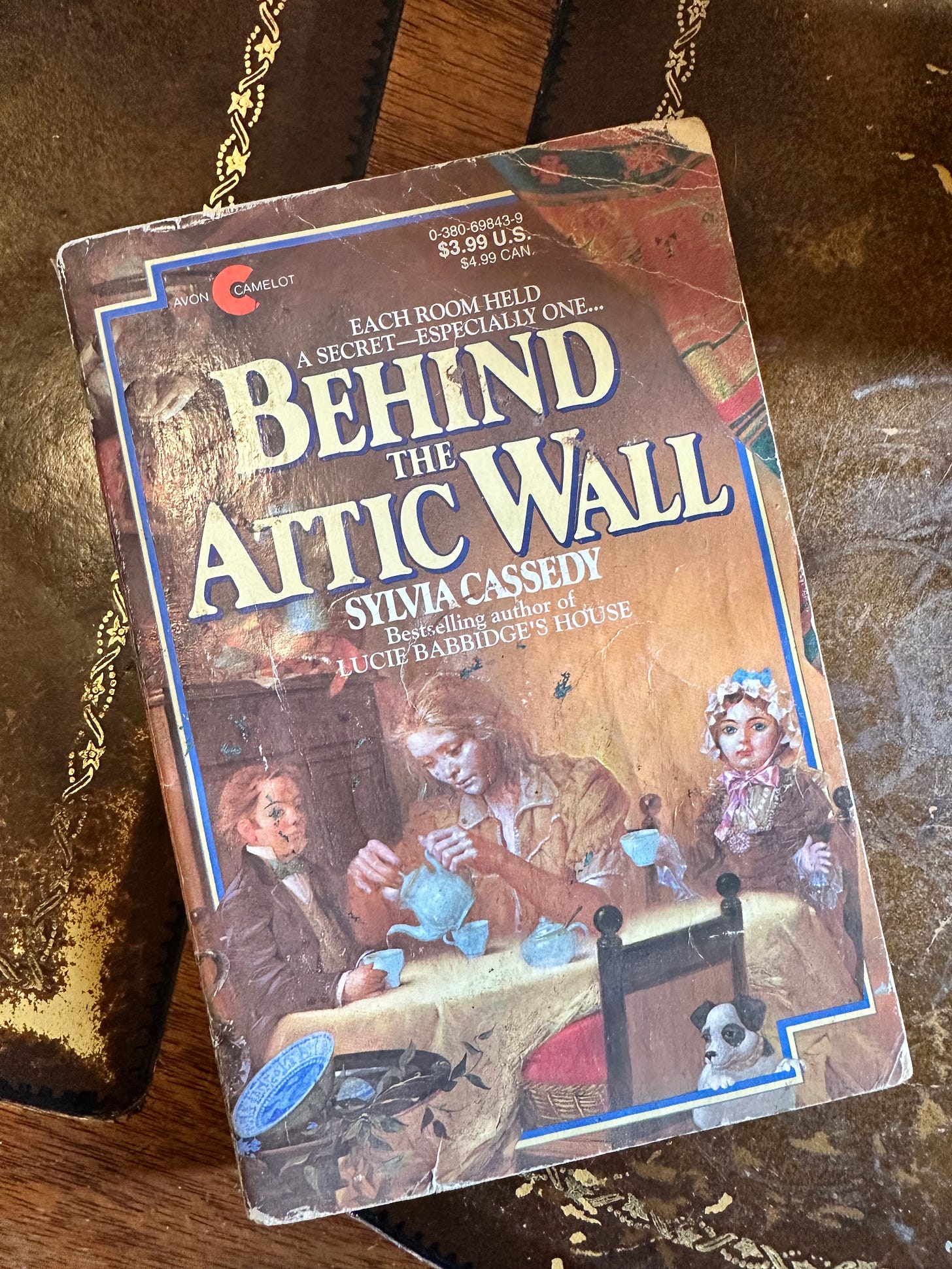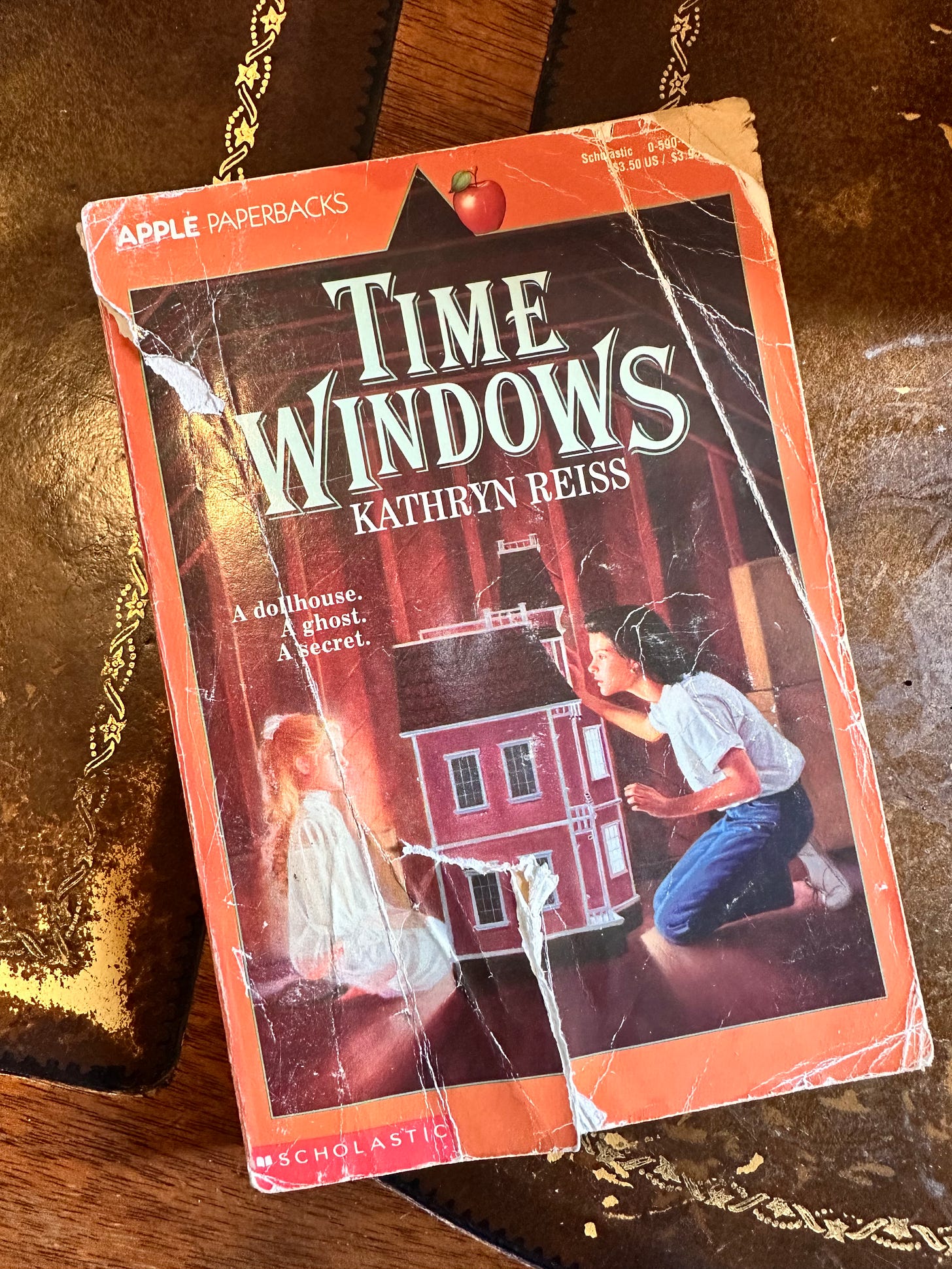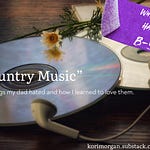As I’ve connected with other writers and readers on Substack and other literary communities, I’ve discovered that we all come from similar places storywise.
We’ve all enjoyed afternoon tea with Anne Shirley and Diana Barry in Avonlea.
We’ve passed through wardrobes and paintings of ships on the ocean into Narnia.
We’ve watched the Secret Garden come back to life.
These are books that, when mentioned in conversation, instantly make us smile at each other and say, “You too?”
But if you grew up in the ‘80s and ‘90s, there’s a whole other layer to childhood bookish experiences, and you know what I’m talking about.
Books that are so dark you find it hard to believe that a publisher actually looked at the manuscript and said, “Yeah, this is totally fine.”
It isn’t just that, though. It’s that our teachers and parents put their seals of approval on these books too. They were in school libraries and taught as actual school assignments.
Even my mom, who was pretty cagey about what I was allowed to read, seems to have been totally fine with it.
If this sounds like a complaint, it isn’t. I honestly wouldn’t have it any other way. Weird, disturbing young adult books are kind of the birthright of my generation. And they took multiple forms—survivalist literature (think Hatchet and The Boxcar Children), ghost stories (think Scary Stories to Tell in the Dark), and even bizarre romances where a girl has some kind of terminal illness that read like a kid’s version of A Walk to Remember or Love Story.
Simply put, kids today are wimps. They’ll never understand what it was like to read Hatchet and experience that scene where Brian goes diving in the lake to forage for supplies in the wreckage of the plane and sees . . . well, you know. There’s no point in traumatizing you again.
I still own my copies of several of these books. They are dog-eared and faded, with my name and elementary school room numbers scrawled on the inside cover in pencil. In recent years, I’ve even gotten them out and reread them.
That’s what’s caused me to be kind of stunned about how dark they are. And yet, I still love them and am not the least bit distressed about reading them when I was ten.
Let me introduce you to some of these titles and show you what I mean.
Behind the Attic Wall by Sylvia Cassedy
Almost nobody seems to remember this book, and that makes me sad because it is so delightfully weird. The book is about a girl named Maggie, who, after losing both her parents, is sent to live with her two great aunts and uncle at a now-defunct boarding school.
Maggie clearly has PTSD. She has shut down emotionally except for outbursts of anger and a lack of care for herself. Her great aunts are at a loss of how to deal with her, and throughout the book, there are threats that they might send her somewhere else.
Then, Maggie discovers a secret room in the attic inhabited by two talking Victorian-era china dolls.
Shockingly, this scene isn’t the stuff of nightmares. Maggie becomes their friend, and the three of them develop a strange family bond that helps her make sense of grief and loss.
However, we eventually learn the backstory of how talking dolls ended up living in the attic, and it’s extremely bizarre and d.
There’s a very active Reddit thread about this book, and one person sums up my response to it perfectly: “This book made me feel weird and mildly creeped out, but in a good way.”
It still does.
Time Windows by Kathryn Reiss
As I looked at my childhood books, I was intrigued by how many recurring tropes show up. I really liked books about secrets in attics and weird dolls, and while there are no weird dolls in Time Windows, there is a weird dollhouse.
Miranda and her family have just moved to a small town with a rich history after purchasing an old house that hasn’t been lived in since the 1940s (this book was written in 1991). While exploring, she discovers a dollhouse in the attic that is an inch-for-inch replica of the real-life house. Looking through the windows, she sees scenes of the families who once lived there.
Quickly, Miranda becomes obsessed with following their lives, which are fraught with dysfunction and drama. But outside the dollhouse, the vibe in her house gets super weird. Miranda’s parents start arguing a lot, and her super-nice mom starts acting straight-up evil.
After that, a mystery emerges about exactly why nobody has lived in this house for so long.
And then, when things can’t get any creepier, Miranda finds an actual mummified corpse under a trapdoor in the attic.
I remember doing a book report about it in fourth grade, and my teacher didn’t bat an eye.
Maybe because the mystery is solved at the end, and everything returns to normal.
Looking Out by Victoria Boutis
Cold War paranoia films and literature live rent-free in my brain. On the Beach, Alas Babylon, Dr. Strangelove, Fail-Safe, Ladybug, Ladybug, Fly Away Home—I love a good story with radiation poisoning, bomb shelters, and nail-biting national security decisions.
I always wondered where all this came from, and I now know it was Looking Out.
You may have heard of the previous two books in this post, but Looking Out is the deepest of cuts in the catalog of books from my childhood. It takes place in 1954 and is about Ellen, a twelve-year-old girl whose parents are Communists.
Ellen has never felt like she fits in, but when they move to small-town Pennsylvania, she hopes she’ll finally have a fresh start. However, while she makes some new friends and gets involved with school activities, the anti-communist paranoia is real.
One of her supposed friends actually says, “The only good commie is a dead commie” to her face. I mean, she doesn’t know Ellen’s secret, but ouch.
To make matters worse, the media circus of the Rosenberg trial is in full swing, and her parents are fighting for the death sentence of the spies to be overturned. As you can imagine, all of this is pretty confusing for Ellen.
I remember checking this book out of the library when I was eleven and reading it on a family trip to Rhode Island. I didn’t understand all its political ramifications. But I understood feeling confused and on the outs with people at school, and the story haunted me.
About ten years later, I randomly thought of it, and after a massive rabbit hole of a Google search, I finally located a copy. Because that’s what the internet was made for, right?
What about you? ‘80s and ‘90s kids—assemble! What were your favorite weird kid’s books? Were any of them giving super what the hell vibes? Drop them in the comments.














